Nothing ruins a tropical fruit craving quite like biting into a sour, unripe pineapple or discovering your golden prize has already gone bad. Picking the perfect pineapple doesn’t have to be a guessing game when you know what to look for. These expert-approved techniques will help you select sweet, juicy pineapples every single time you shop.
1. Check the Crown Leaves for Freshness
Fresh pineapples wear their health on their heads through vibrant green crown leaves. Look for leaves that stand upright with a rich, deep green color and no brown or yellow edges.
Wilted, brown, or dried-out leaves signal an older fruit that’s past its prime. The leaves should feel firm to the touch, not mushy or brittle.
Here’s a fun test: try gently tugging on one of the center leaves. If it pulls out easily, your pineapple is perfectly ripe and ready to eat!
2. Give It the Sniff Test
Your nose knows best when it comes to pineapple selection. Turn the fruit upside down and take a good whiff of the bottom end where the stem was attached.
A ripe pineapple should smell sweet and tropical, like the fruit itself. If there’s no scent at all, the pineapple isn’t ready yet.
Watch out for overly strong, fermented, or sour smells, which indicate the fruit has started to spoil. Trust your instincts – if something smells off, pick a different pineapple.
3. Feel for the Right Firmness
Perfect pineapples strike a balance between firm and slightly soft. Gently squeeze the fruit with your palms – it should give just a little under pressure without feeling mushy.
Rock-hard pineapples need more time to ripen, while overly soft ones have likely gone bad inside. The skin should feel smooth and taut, not wrinkled or dented.
Pay special attention to the bottom of the fruit, which tends to soften first. A slight give here is normal, but avoid any that feel squishy or wet.
4. Look for Golden Yellow Skin Color
Color tells the ripeness story better than any other visual clue. Search for pineapples with golden yellow skin that covers most of the fruit’s surface area.
Green pineapples haven’t reached their full sweetness potential yet, while brown patches often indicate overripe or damaged areas. Some green near the top is perfectly normal and acceptable.
The golden hue should look vibrant and healthy, not dull or faded. Remember, pineapples don’t continue ripening much after being picked, so color is crucial for immediate enjoyment.
5. Check the Weight-to-Size Ratio
Heavier pineapples pack more juice and sweetness than their lighter counterparts of similar size. Pick up a few different pineapples and compare their weights in your hands.
The extra weight comes from the fruit’s natural juices, which develop as the pineapple ripens properly. Lighter fruits often taste dry and lack the tropical sweetness you’re craving.
This weight test works especially well when comparing pineapples that appear similar in size. Choose the heaviest one for the best flavor experience every time.
6. Examine the Eyes and Skin Pattern
Those diamond-shaped sections covering the pineapple’s surface tell important stories about freshness and quality. Look for eyes that appear plump and well-defined rather than sunken or flat.
The pattern should look uniform across the entire fruit without any dark spots, mold, or unusual discoloration. Healthy eyes have a consistent size and shape throughout.
Avoid pineapples with soft, dark, or oozing eyes, as these indicate spoilage has already begun. The surface should look clean and free from any sticky residue or white fuzzy growth.
7. Test the Thump Sound
Professional fruit pickers often use the thump test to gauge ripeness levels. Gently tap the pineapple with your knuckles and listen carefully to the sound it makes.
A ripe pineapple produces a solid, deep thump rather than a hollow or high-pitched sound. Think of it like tapping a full water bottle versus an empty one.
This technique takes a bit of practice, but once you learn the difference, you’ll be able to identify perfect pineapples by sound alone. The thump should feel satisfying and substantial.
8. Avoid Obvious Warning Signs
Smart shoppers know when to walk away from problem pineapples. Steer clear of fruits with visible mold, dark wet spots, or any areas that look bruised or damaged.
Cracks in the skin, leaking juice, or an overly strong fermented smell all signal trouble ahead. These pineapples won’t improve with time and will likely taste unpleasant.
Also skip pineapples with dried-out, completely brown crowns or those that feel unusually light for their size. Trust your instincts – when in doubt, choose another pineapple instead.
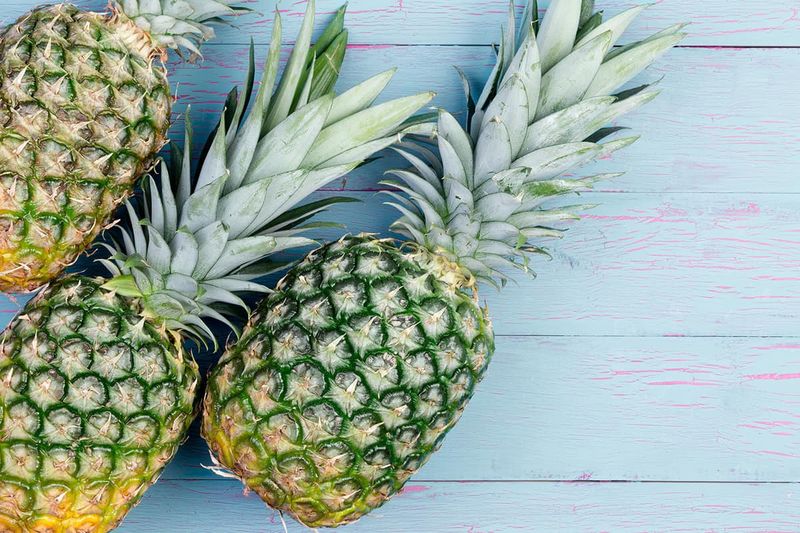
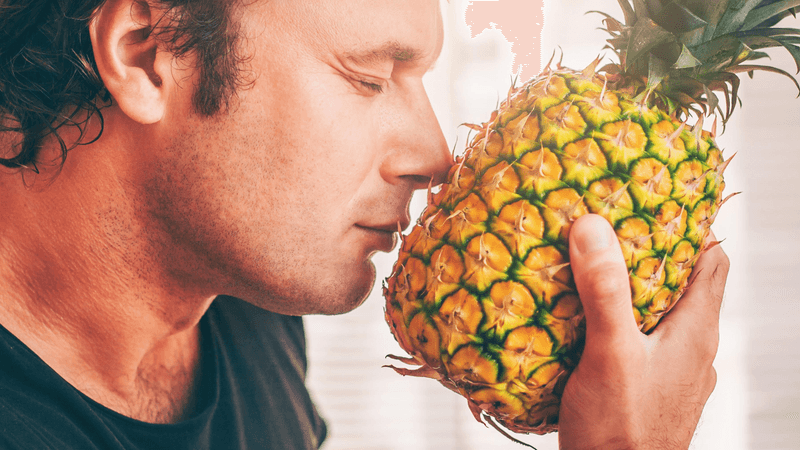
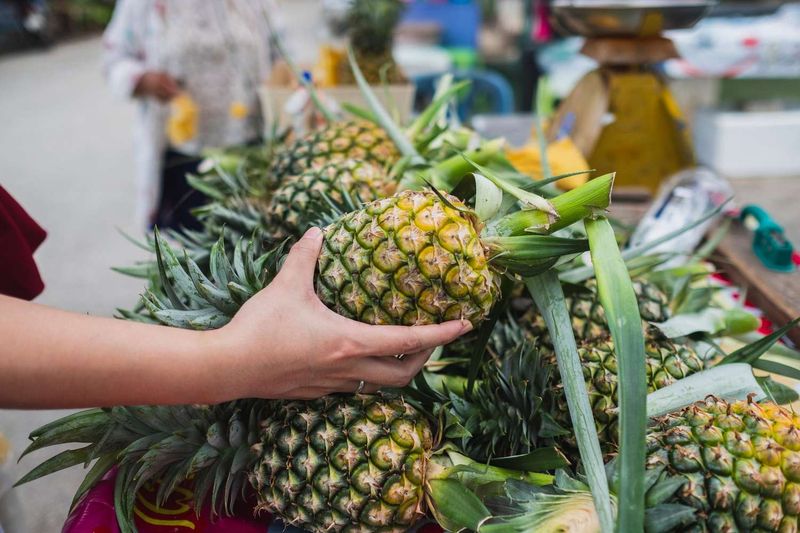
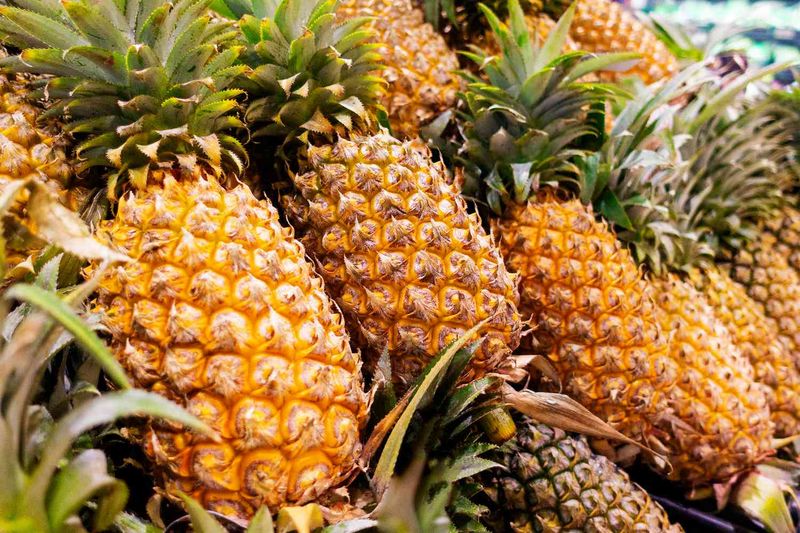
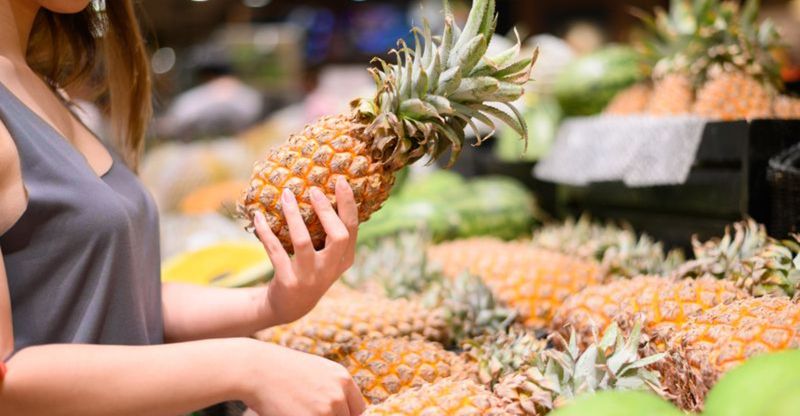
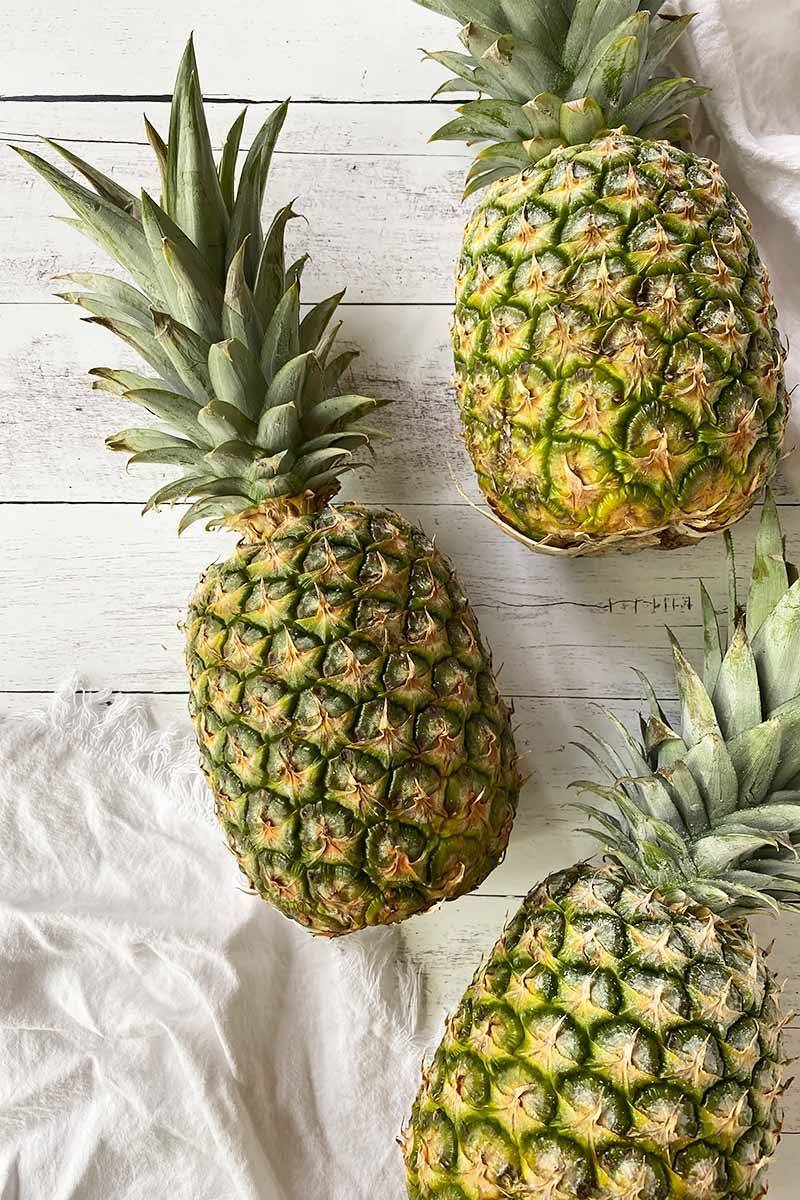
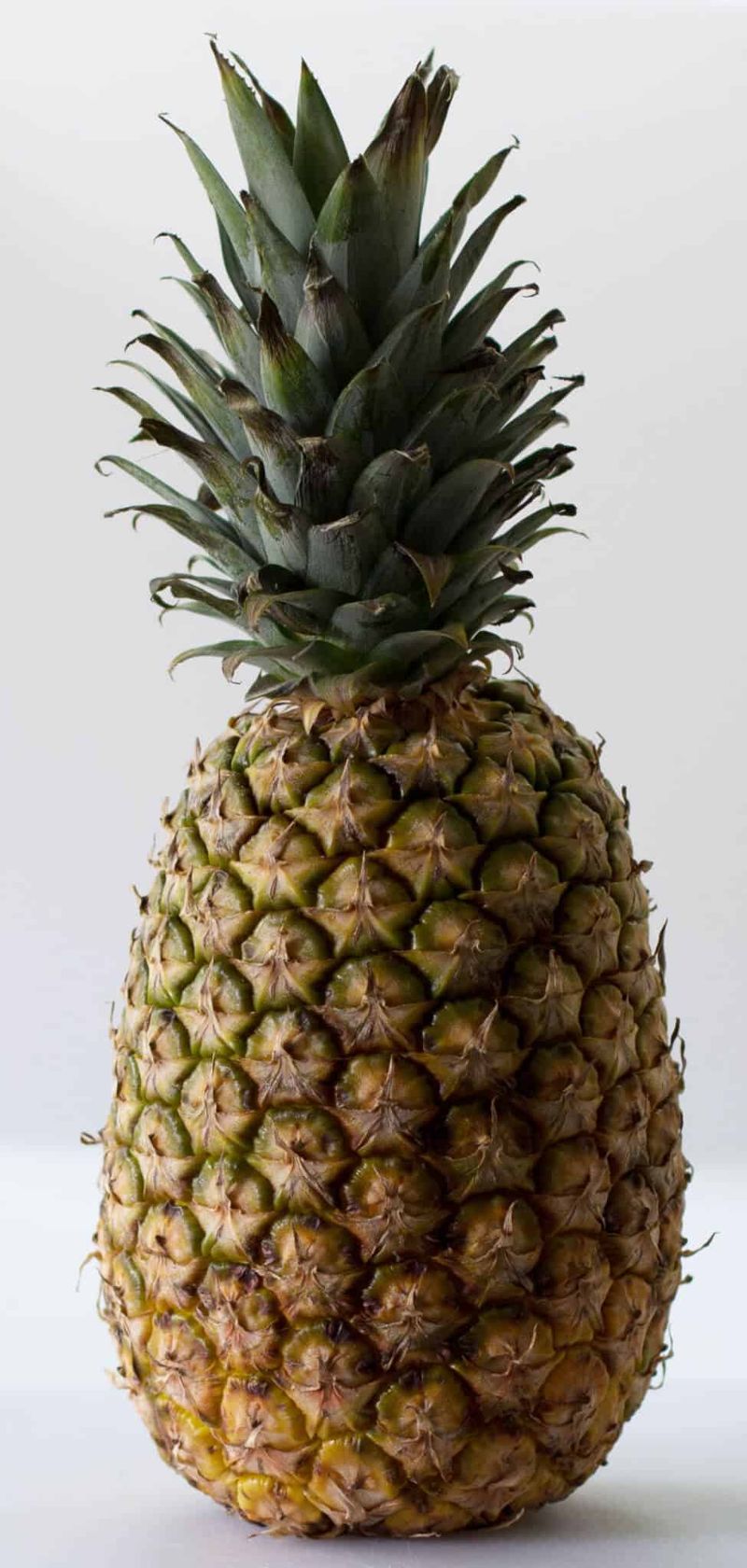
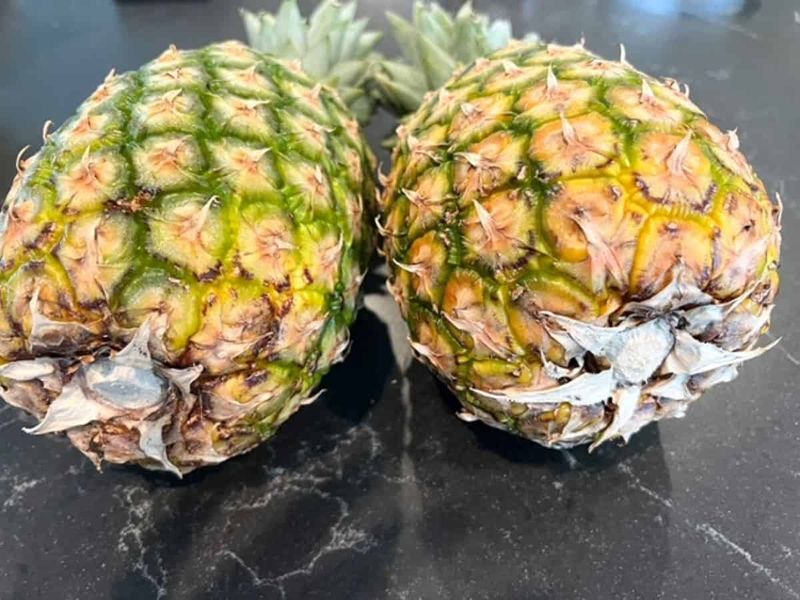
Leave a comment